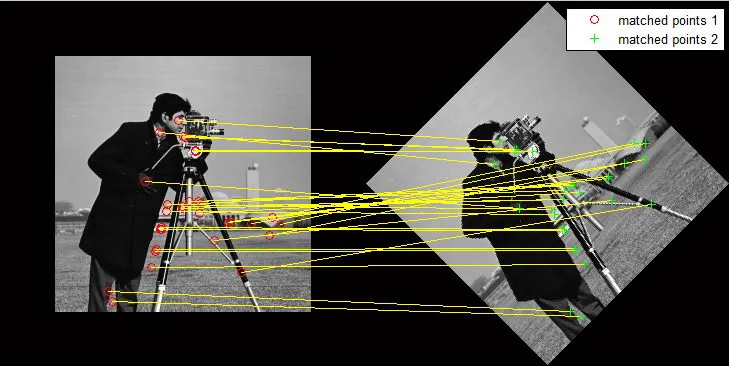以下内容如何工作?
我正在寻找
我正在寻找
MSER特征点,然后使用matchFeatures函数将它们配对。% file1 = 'roofs1.jpg';
% file2 = 'roofs2.jpg';
file1 = 'cameraman.tif';
I1 = imread(file1);
%I2 = imread(file2);
I2 = imrotate(I1, 45);
% I1 = rgb2gray(I1);
% I2 = rgb2gray(I2);
% %Find the SURF features.
% points1 = detectSURFFeatures(I1);
% points2 = detectSURFFeatures(I2);
points1 = detectMSERFeatures(I1);
points2 = detectMSERFeatures(I2);
%Extract the features.
[f1, vpts1] = extractFeatures(I1, points1);
[f2, vpts2] = extractFeatures(I2, points2);
%Retrieve the locations of matched points. The SURF featurevectors are already normalized.
indexPairs = matchFeatures(f1, f2, 'Prenormalized', true) ;
matched_pts1 = vpts1(indexPairs(:, 1));
matched_pts2 = vpts2(indexPairs(:, 2));
figure; showMatchedFeatures(I1,I2,matched_pts1,matched_pts2,'montage');
legend('matched points 1','matched points 2');
显然它工作正常

但是它怎么可能呢?MSERRegions仅包含椭圆形。它们如何匹配呢?显然这并不足够信息!
更新
我发现extractFeatures函数从MSER点返回SURF特征向量。因此,它会比较64维的SURF向量。